What is a deck?
A deck is a popular addition to an outdoor living space that adds functionality, style, and value to a property. It is typically an elevated surface made of wood or composite materials designed to provide a stable platform for any number of outdoor activities, such as al fresco dining, lounging, or hosting events. Decks are also often used as an extension of the indoor living space, providing an easy transition from inside to outside.
One of the main benefits of a deck is the ability to create a unique space that reflects individual tastes and needs. Decking materials come in a variety of colors, finishes, and styles to suit any aesthetic. Wood decks, for instance, offer a warm and natural look that is both classic and timeless. On the other hand, composite decking provides the look of wood without the maintenance that comes with natural timber.
Installation costs and permits vary depending on the design, size, and location of the deck. Elevated decks may require additional structural support and safety features, while ground-level decks can be more versatile and accessible. Similarly, a DIY wooden deck is an option for those who want to save on costs, but a professional installation will ensure safety and quality.
Once installed, regular maintenance is necessary to ensure the longevity and appearance of the deck. Depending on the material, maintenance can include regular cleaning, power washing, and waterproofing to protect against weather damage. The benefits, however, are numerous and make decks a popular choice for homeowners who want an outdoor living space that reflects their style and needs.
Is a deck more expensive than a patio?
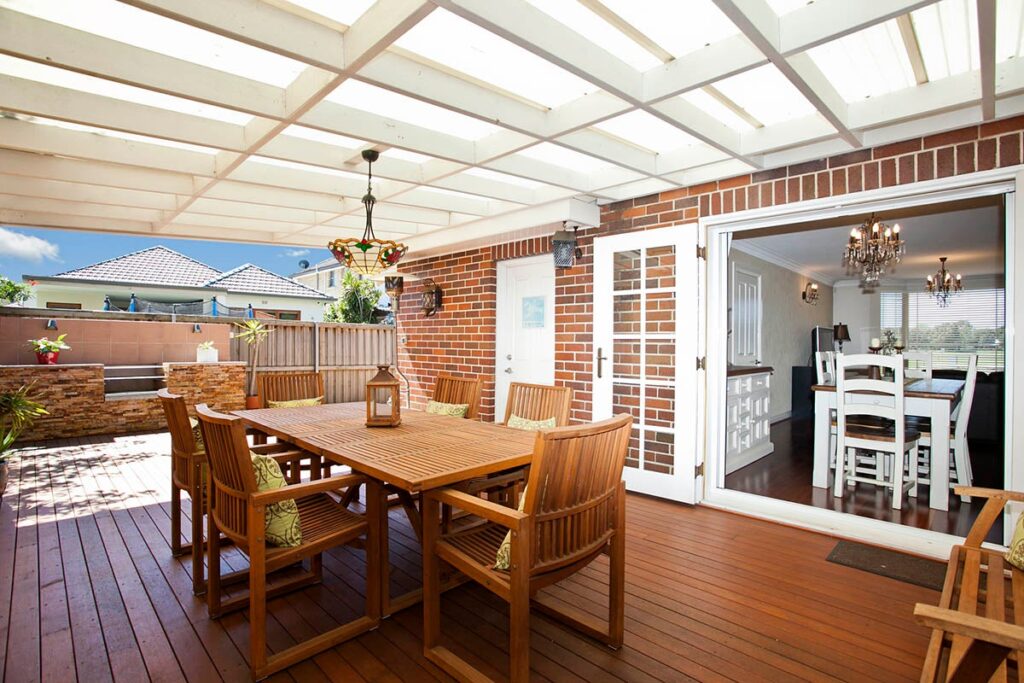
When it comes to creating an outdoor living space, homeowners often grapple with the question of whether a deck or a patio is the better option. Both offer great opportunities for entertaining, relaxation, and enjoying the beauty of your backyard. However, one of the biggest concerns that people have is cost. Is a deck more expensive than a patio? It all depends on a variety of factors.
Decking materials
One of the main factors that will impact the cost of a deck is the type of material that is used. Natural wood decks are a popular choice due to their classic and warm look. However, they can also be more expensive than other options, such as composite decking or concrete patios. Composite materials typically cost more upfront, but they require less maintenance over time. It really comes down to personal preference and what you are willing to spend.
Installation costs
Installation costs are another important factor to consider. A DIY wooden deck may seem like a cost-effective way to create a beautiful outdoor space, but keep in mind that doing it yourself requires a lot of hard work, time, and tools. If you are not experienced in construction, it may be best to hire a professional. On average, a professional installation of a wooden deck can cost between $8-$12 per square foot, while a concrete patio may cost between $6-$10 per square foot.
Maintenance costs
While a deck may be more expensive initially, it may offer better value in the long run due to its durability and lower maintenance costs. Wood decks will require regular cleaning and staining, while composite decking will only need occasional power washing. In contrast, concrete patios may need more frequent repairs due to cracking or unevenness.
Return on investment
It’s important to consider the return on investment when deciding between a deck or patio. According to Remodeling Magazine, a wooden deck recoups an average of 73% of its cost at resale, while a concrete patio recoups an average of 47%. Additionally, a deck may increase the value of your home more than a patio would.
In conclusion, the question of whether a deck is more expensive than a patio is not a straightforward one. It depends on a variety of factors, including the type of material used, installation costs, maintenance costs, and return on investment. Ultimately, it comes down to personal preference and budget. Both options offer great opportunities for creating a beautiful and functional outdoor living space.
Outdoor Space Considerations
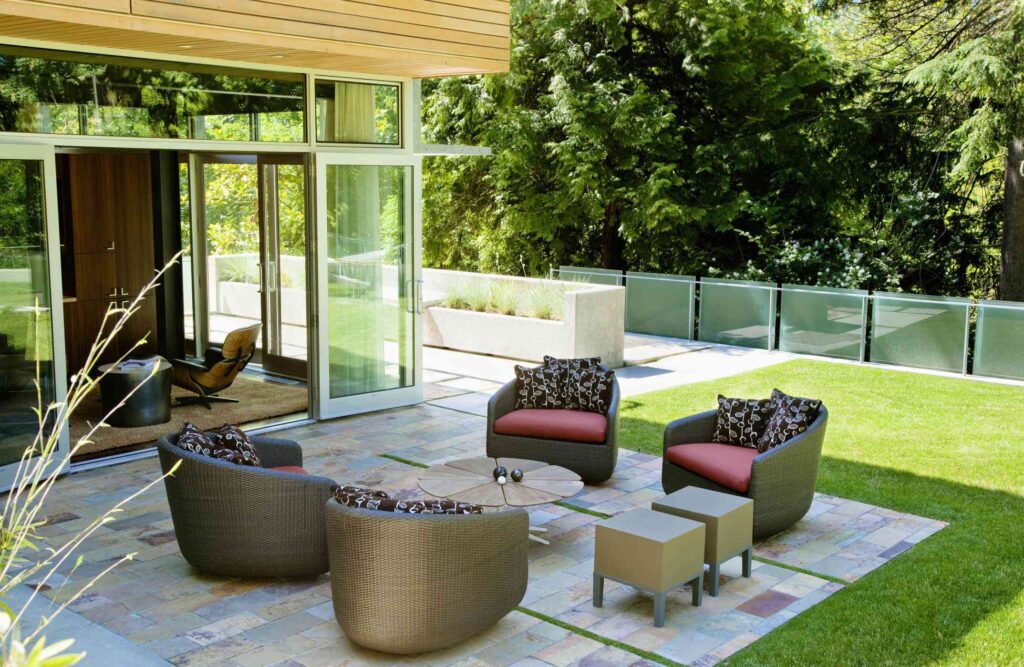
When it comes to creating an outdoor living space, there are a number of important considerations to keep in mind. From choosing the right materials to considering the layout and purpose of your space, taking the time to plan out your outdoor area can make a big difference in both functionality and aesthetic appeal. Here are some key outdoor space considerations to keep in mind:
1. Materials: Your choice of materials can have a big impact on both the look and feel of your outdoor space. Whether you opt for natural wood decking, composite materials, or a concrete patio, it’s important to consider factors such as durability, maintenance requirements, and cost.
2. Layout: The layout of your outdoor space can make a big difference in both comfort and functionality. Consider the shape and size of your space, as well as features such as shade, privacy, and seating areas. Additionally, think about how you might want to use your outdoor space – will it be primarily for entertaining, relaxing, or outdoor cooking?
3. Weight Restrictions: If you’re considering building a deck, it’s important to keep weight restrictions in mind. Elevated decks, in particular, may need to meet certain requirements to ensure safety and stability.
4. Building Permits: Depending on where you live, you may need to obtain a building permit before constructing your outdoor space. Be sure to check with your local government agencies to ensure you are meeting all necessary requirements.
5. Installation Costs: The cost of installation can vary widely depending on factors such as labor, materials used, and the complexity of the project. It’s important to get several quotes from reputable contractors to ensure you are getting a fair price.
6. Maintenance: Maintenance requirements can also vary depending on the materials used in your outdoor space. Wooden decks, for example, may require regular staining and sealing, while concrete patios may need to be power washed periodically. Be sure to factor in ongoing maintenance costs when planning your outdoor space.
Ultimately, the key to creating a successful outdoor living space is to carefully consider all factors and plan accordingly. With the right materials, layout, and maintenance plan, you can create an inviting and functional area that you’ll enjoy for years to come.
Size and Layout of the Space

When it comes to creating your ideal outdoor space, size and layout are two critical components that should not be overlooked. Whether you opt for a deck or a patio, the size of your space has a significant impact on both the look and functionality of your outdoor area.
Consider the shape and size of your space to determine how it can best be utilized. For example, a long narrow space may be better suited for a deck than a patio, as it can be easier to configure the seating areas and create functional spaces for entertaining and relaxation.
Additionally, consider how you might want to use your outdoor area. Would you like a space for outdoor cooking and dining, or a place to relax with friends and family? Consider adding a fire pit, outdoor kitchen, or seating area to create functional spaces that meet your specific needs.
Shade and privacy are also important factors to consider when designing your outdoor area. Trees, umbrellas, and retractable awnings provide excellent shade options, while privacy walls, screens, and fences can help create a more intimate setting.
Incorporating landscaping elements such as flower beds, shrubs, and trees into your outdoor area can help create a natural and inviting space. Additionally, incorporating elements such as seating walls and water features can add an extra touch of style and functionality to your outdoor space.
Ultimately, the size and layout of your outdoor space should be carefully considered to create a functional and inviting area that meets your specific needs. Whether you opt for a deck, patio, or a combination of both, taking the time to properly plan and design your outdoor area can make all the difference in creating a space that provides both comfort and functionality.
Ground Level and Uneven Terrain
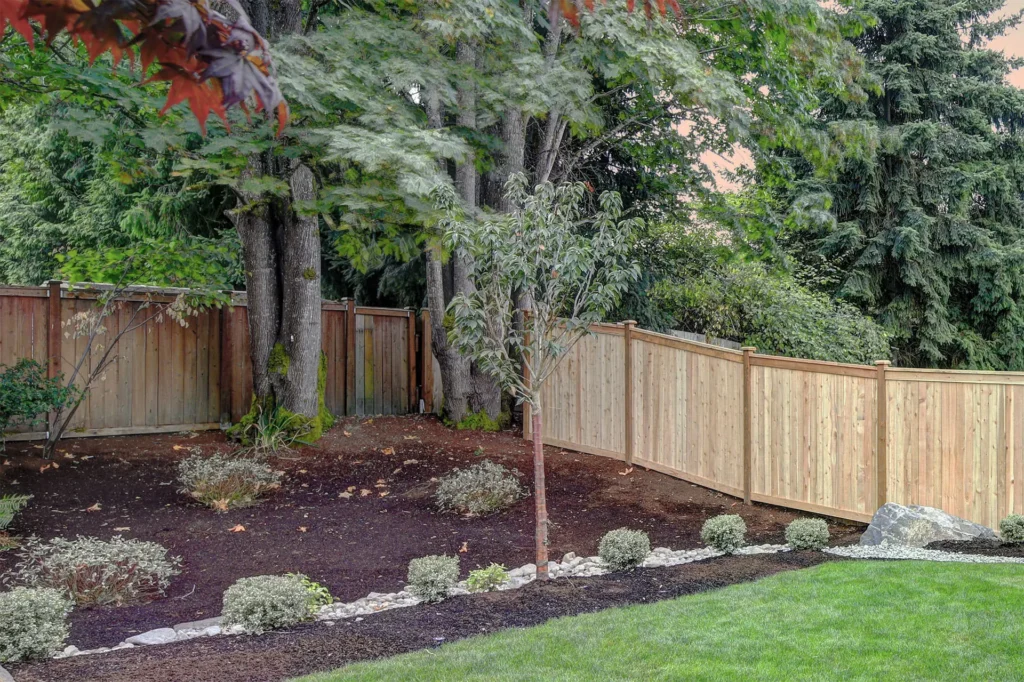
When designing an outdoor space, one of the factors to consider is the ground level and terrain of the area. The type of surface on which you plan to build your deck or patio can have a significant impact on the planning, installation, and cost of your project.
If your outdoor area is on uneven terrain, it is important to address this issue before any building or installation work can take place. Uneven terrain can cause safety hazards and uneven weight distribution that can put stress on your deck or patio. Before starting the project, consider hiring a professional to come in and level the ground. This will ensure a stable foundation for your outdoor living space and prevent any potential problems in the future.
If you are working with ground level terrain, you may still need to consider factors such as drainage and moisture issues. Ground level decks and patios can be impacted by moisture, so it is important to use materials that can resist rot and fungus growth caused by dampness. Additionally, these surfaces may require more regular cleaning as debris and leaves can accumulate on them, especially if they are surrounded by trees or other vegetation.
When it comes to adding outdoor living space to an uneven terrain or ground level surface, your options for materials are vast. Wooden or composite decking materials can be used for elevated decks that rise above terrain, while concrete patios can be poured on level ground. Both options can be equipped with waterproofing materials, which is an absolute must for decks to ensure that the construction is not damaged by moisture. For areas with uneven terrain, pavers or bricks can be used to create a level surface for a patio, while pressure-treated wood or composite materials can still be used for a deck.
In conclusion, the ground level and terrain of your outdoor space are critical factors that should not be overlooked when planning your outdoor living area. Proper preparation and use of appropriate materials can ensure a safer, more enjoyable outdoor space that can be enjoyed for years to come.
Weight Restrictions on the Structure
If you’re considering building a deck or patio, weight restrictions are an important consideration. Weight restrictions are put in place to ensure the safety and integrity of the structure, and to prevent it from collapsing due to excessive weight.
The weight restriction for a deck or patio will depend on various factors, such as the type of material used for the construction, the dimensions of the structure, and the height above the ground. Different materials have different weight capacities, so it’s important to consult with a professional contractor or engineer to determine the maximum weight the structure can support.
For instance, a wooden deck or patio may have weight restrictions that range from 50 pounds per square foot to 75 pounds per square foot, while a composite deck may have a weight capacity of around 100 pounds per square foot. Elevated decks or decks with multiple levels will require additional support and smaller weight restrictions.
It’s important to keep in mind that weight restrictions aren’t just limited to the furniture or appliances you plan on placing on the structure. Items like planters, fire pits, grills and even people will all add weight to the deck or patio. Make sure to factor in all of the potential weight that will be added to the structure when determining the weight capacity.
Exceeding weight restrictions can result in significant damage to the structure, and can even cause it to collapse. In addition to being a safety hazard, this can also be a costly and time-consuming repair. It’s always best to err on the side of caution and ensure that the weight restrictions are strictly adhered to.
In conclusion, weight restrictions are an important consideration when building a deck or patio. The weight capacity will vary depending on the materials used, the dimensions of the structure, and the height above the ground. By following weight restrictions and consulting with a professional contractor or engineer, you can ensure that your deck or patio is safe and secure for years to come.
Personal Preference in Design & Aesthetics
When it comes to designing and decorating our homes or workspaces, personal preference plays a significant role in the process. Everyone has their unique taste in design and aesthetics, and this influences the way we choose the colors, materials, and furnishings that we incorporate into our living or working spaces.
Preferences in design and aesthetics are shaped by various factors, such as culture, upbringing, personality, and individual experiences. Some people favor minimalist styles and clean lines, while others may prefer more ornate and decorative elements. Some may lean towards modern and trendy designs, while others may opt for timeless and classic looks. The possibilities are endless, and each person’s preferences are entirely subjective.
Personal preference also affects the choice of colors used in design and decor. Some people may prefer bold and bright colors, while others may opt for more muted and subtle hues. Some may like a particular color scheme that evokes specific emotions or memories, while others may be drawn to colors that complement each other or create a particular ambiance.
Furnishings and materials are another aspect that varies based on personal preference. Some people prefer natural materials like wood, stone, or leather, while others may favor synthetic materials like plastic or metal. The choice of furnishings, from chairs and sofas to lamps and rugs, is entirely dependent on the individual’s specific tastes and personality.
In conclusion, personal preference in design and aesthetics is an essential aspect of creating a living or working space that feels comfortable and inviting. By understanding what we like and dislike, we can create a space that is not only aesthetically pleasing but also reflects our personality and unique style. When designing a space, it’s essential to take into account personal preference and incorporate elements that speak to our tastes and preferences. Your living or working space should be a reflection of yourself, a sanctuary or perfect location where you can truly be yourself.
Costs Associated with Building a Deck or Patio
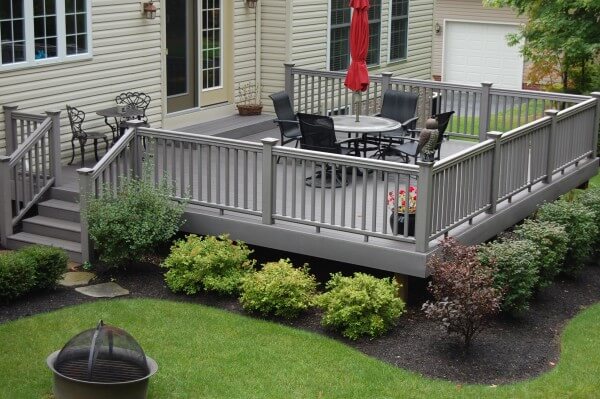
When it comes to creating an outdoor living space, choosing between a deck or patio is just the beginning. Once you’ve made that decision, it’s time to think about the costs associated with building one of these structures. From materials to labor, there are a few key factors that can impact the overall cost of your project.
One of the most significant factors contributing to the cost of building a deck or patio is the materials used. The type of wood or composite decking material chosen can have a significant impact on the overall cost. Natural wood options like cedar or redwood tend to be more expensive, while composite decking materials may have a higher upfront cost but may prove to be more cost-effective in the long run due to their durability and low maintenance needs.
Another factor that can impact the cost of your deck or patio is the size of the structure. Larger decks or patios require more materials and labor, which can drive up the overall cost. Additionally, if the ground is sloped or uneven, it may require more extensive construction work and additional materials to level the ground and create a stable structure.
Building permits and installation costs are also important factors to consider. Depending on your location, you may need to obtain a building permit before beginning construction on your deck or patio. The cost of the permit can vary widely based on your location and the scope of the project. Installation costs can vary depending on the contractor you choose and the complexity of the structure.
Ongoing maintenance costs are another consideration when building a deck or patio. Natural wood options may require more frequent power washing and sealing to maintain their appearance and prevent rotting. Composite decking materials may require less maintenance, but the cost of cleaning solutions or waterproofing materials may add up over time. Additionally, regular cleaning and maintenance are necessary to ensure the longevity of your structure.
Ultimately, the decision between building a deck or patio will depend on your personal preferences and budget. Understanding the costs associated with construction, maintenance, and materials can help you make an informed decision and create an outdoor living space that suits your needs and your wallet.
Average Cost of Materials for Each Structure Type
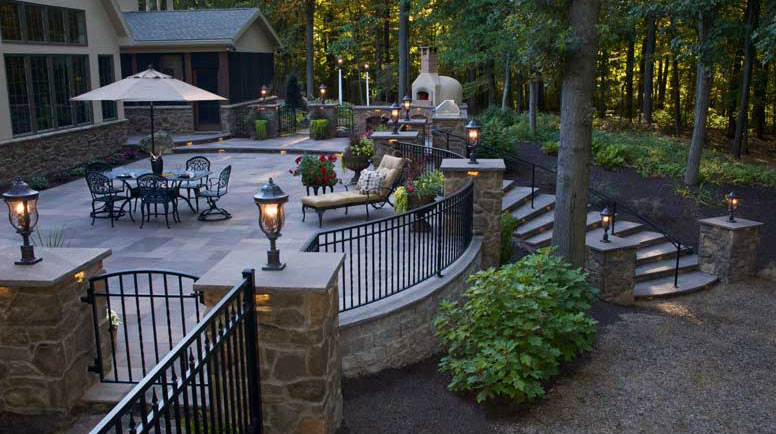
Whether you’re looking to expand your outdoor living space or increase your home’s value, building a deck or patio can be an excellent option. However, one of the most significant factors to consider when planning such a project is the cost of the materials you’ll need.
The average cost of materials for a deck can vary depending on the type of wood or composite material you choose. Natural woods like cedar or redwood tend to be more expensive, while pressure-treated lumber is more budget-friendly. On average, homeowners can expect to spend between $3 to $30 per square foot for materials, depending on the decking material and quality.
Composite decking materials can range from $9 to $16 per square foot, but they offer a low-maintenance and durable option for those who don’t want to spend time and money on upkeep. However, it’s essential to note that composite materials may not be as long-lasting as natural wood options.
When considering building a patio, the average cost of materials can also vary based on the material you choose. Concrete pavers are a popular choice and can range from $.50 to $5 per square foot depending on the quality and size. Natural stone, like flagstone or slate, can be more expensive, costing anywhere between $15 to $30 per square foot.
If you’re looking for a more budget-friendly option, you may want to consider using brick pavers, which tend to fall between $1 and $8 per square foot. However, keep in mind that the cheaper options may not be as durable and require more maintenance over time.
It’s important to note that regardless of the materials you choose for your deck or patio, the cost of installation and other factors like building permits and ongoing maintenance costs should also be considered. By understanding the average cost of materials and other associated expenses, you can better plan and budget for your upcoming project.
Difference Between Natural Wood & Composite Materials

When it comes to building a deck, homeowners must decide between using natural wood or composite materials. Both options have their advantages and disadvantages, and understanding the differences can help you make the right decision for your outdoor space.
Natural wood decks offer a classic and timeless look that many homeowners prefer. Cedar and redwood are popular options due to their natural resistance to decay and insects. They are also durable and provide a long lifespan.
However, natural wood requires regular maintenance, such as power washing, staining, and sealing, to keep it looking its best. Wood can also be prone to warping and splintering over time, which can create safety concerns.
On the other hand, composite materials offer a low-maintenance and durable option for those who want to spend less time and money on upkeep. Composite decking is made from a combination of natural wood fibers and recycled materials, such as plastic and sawdust.
Composite decking materials come in a range of colors and textures, and they don’t require staining or sealing. They are also resistant to mold, mildew, and insects, making them an excellent choice for homeowners who live in areas with harsh weather.
However, composite materials can be more expensive than natural wood options, and they may not have the same lifespan. They can also be more prone to heat retention, which can make them uncomfortable to walk on during hot summer days.
Ultimately, the decision between using natural wood or composite materials comes down to personal preference and budget. If you don’t mind the maintenance requirements of natural wood decks, they provide a classic look that many homeowners prefer. However, if you’re looking for a low-maintenance and durable option, composite materials may be the way to go. Consider your outdoor space, your budget and your priorities before making your choice.
Installation Costs for Each Structure Type
When it comes to creating an outdoor living space, many homeowners must decide between installing a deck or a patio. One of the factors that can influence this decision is the cost of installation. Let’s take a closer look at the installation costs for each structure type.
A concrete patio is often the most cost-effective option for an outdoor living space. The cost of installation can vary based on factors such as the size of the patio, the thickness of the concrete, and any additional features such as decorative stamping. On average, homeowners can expect to spend $6 to $10 per square foot for a basic concrete patio.
Wooden decks can vary in price based on the type of wood and the size of the deck. For a 200-500 square foot deck, homeowners can expect to spend around $8,000 to $10,000 for a natural wood deck. Composite decking materials are a bit more expensive, running between $10 and $15 per square foot. However, composite materials can provide a longer lifespan and require less maintenance than natural wood.
In addition to the cost of materials, there are also labor costs to consider. The cost of labor can vary based on factors such as the size and complexity of the project, as well as the expertise and experience of the contractor. On average, homeowners can expect to pay around $5 to $10 per square foot for labor costs, which can add up quickly for larger projects.
It’s also important to keep in mind any additional costs that may come up during the installation process. For example, if a building permit is required, this can add several hundred dollars to the overall cost. Uneven ground or terrain may also require additional excavation or grading work, adding to the cost of installation.
Ultimately, the cost of installation will depend on the unique factors of each project. While a concrete patio may be the most cost-effective option upfront, a deck made from composite materials may provide a better return on investment in the long run due to its low maintenance requirements and longer lifespan. It’s important to consider all factors when making a decision on which structure type to install in your outdoor living space.
Additional Considerations (Building Permits, Power Washing, Waterproofing Materials)
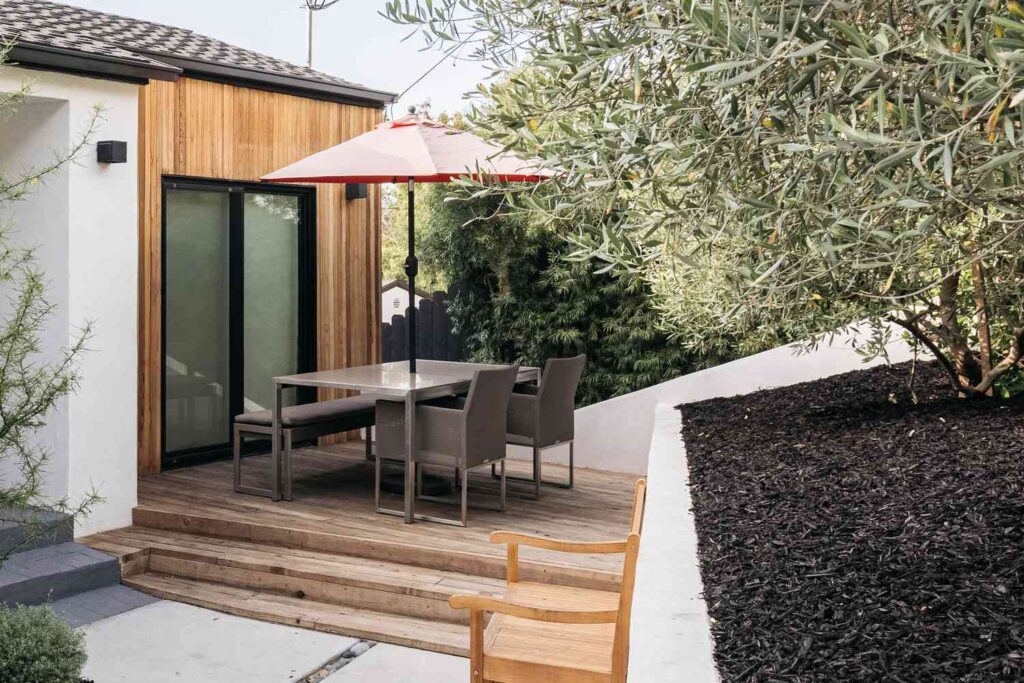
When it comes to building an outdoor living space, there are many factors to consider. It’s not just about the cost of materials and labor. Other additional considerations that can impact your budget and the overall outcome of your project include building permits, power washing, and waterproofing materials.
Building Permits:
One of the first things to think about when building an outdoor living space is whether or not you need a building permit. This can vary depending on your location and the specific regulations in your area. However, if a permit is required, it can add several hundred dollars to the cost of your project. It’s important to research and understand the rules and regulations in your area before beginning construction. Failure to obtain the proper permits can result in fines and even having to take down the structure.
Power Washing:
Over time, your outdoor living space can become dirty and stained from exposure to the elements. Power washing is a great way to restore the appearance of your space and remove any built-up dirt and grime. However, this service comes at an additional cost. Depending on the size of your space and the extent of the cleaning needed, power washing can cost anywhere from $100 to $500. It’s important to include this in your budget and schedule regular power washing to keep your outdoor space looking fresh and clean.
Waterproofing Materials:
Waterproofing materials are crucial in protecting your outdoor living space from moisture damage. If your space is not properly waterproofed, you may be faced with issues such as water damage, mold, and rot. However, these materials can be expensive and add to the overall cost of your project. The type of materials needed will depend on the specific aspects of your space, such as whether it’s a deck or patio, and whether it’s elevated or at ground level. It’s important to discuss waterproofing options with your contractor to ensure that your space is properly protected from moisture damage.
In conclusion, when building an outdoor living space, it’s important to consider additional factors beyond just the cost of materials and labor. Building permits, power washing, and waterproofing materials are all important aspects to consider when planning your project. By understanding and budgeting for these additional considerations, you can ensure that your outdoor living space is both beautiful and functional for years to come.
Return on Investment (ROI) for Decks vs. Patios
A crucial factor to consider when deciding between a deck or patio for your outdoor living space is the return on investment (ROI). A well-designed and constructed outdoor living space can add value to your home, but the level of ROI can vary depending on the type of structure you choose to build.
Decks and patios are two popular options for outdoor living spaces. A deck is typically made of wood or composite materials and is elevated from the ground, while a patio is a ground-level paved area typically made of materials like concrete, brick, or natural stone. When comparing the ROI of these two options, it’s important to consider several factors.
First, the initial cost of installation is typically higher for a deck than a patio. This is due to the higher cost of materials and the additional skill and labor needed to construct an elevated structure. However, decks may offer a higher ROI in the long run due to their ability to adapt to uneven terrain and their potential for a more elevated view.
In contrast, patios are typically less expensive to install due to their ground-level construction and the availability of lower-cost materials. However, patios may have a shorter lifespan and may have less versatility in terms of design and layout.
Another important factor to consider is the maintenance costs associated with each option. Decks made of natural wood require regular maintenance, including power washing, staining, and sealing. Composite materials require less maintenance, but may still require periodic cleaning and upkeep. Patios, on the other hand, generally require less maintenance and may only require regular cleaning and occasional repairs.
Ultimately, the ROI of your outdoor living space will depend on your personal preferences, the materials and design choices you make, and the overall quality of the construction. It’s important to work with a knowledgeable contractor who can help you make informed decisions and ensure that your investment will be a valuable addition to your home.
Impact on Resale Value of Home Based on ROI of Each Structure Type
Homeowners looking to increase the value of their property often turn to outdoor living spaces, as they not only provide a place to relax and enjoy nature but can also add significant value to a home. Decks and patios are two of the most popular options for such outdoor living spaces, but which one will have the higher ROI and impact the resale value of a property more?
When it comes to resale value, the return on investment (ROI) should be a crucial consideration for homeowners. In this case, the ROI for a deck may be higher than a patio due to several factors. For example, decks tend to offer more versatility in terms of design and layout, allowing homeowners to create a personalized space that potential buyers may find more appealing. Additionally, elevated decks may provide a better view and better adapt to uneven terrain, which can also increase the value of the property.
However, patios are also a popular choice among homeowners due to their generally lower cost and lower maintenance requirements, which may be more appealing to buyers who don’t want to invest heavily in an outdoor living space. In addition, patios made from natural stone or other high-end materials may appeal to buyers looking for a more luxurious outdoor space, potentially increasing the resale value of the property.
The installation cost for a deck is generally higher than that of a patio, due to the additional materials and labor required to construct an elevated structure. However, the upkeep costs for a deck can be lower than a patio if the homeowner chooses low-maintenance composite materials. Regular cleaning and occasional upkeep are typically all that is required for composite materials, whereas a natural wood deck may require regular staining and sealing to maintain its appearance and protect against rot and decay.
Ultimately, the choice between a deck and a patio comes down to personal preference and budget. Homeowners should consider their specific needs and the potential ROI of each option before making a decision. While both options can increase the resale value of a home with the right design and materials, a well-designed and maintained deck may provide the higher ROI and greater value in the long run.




